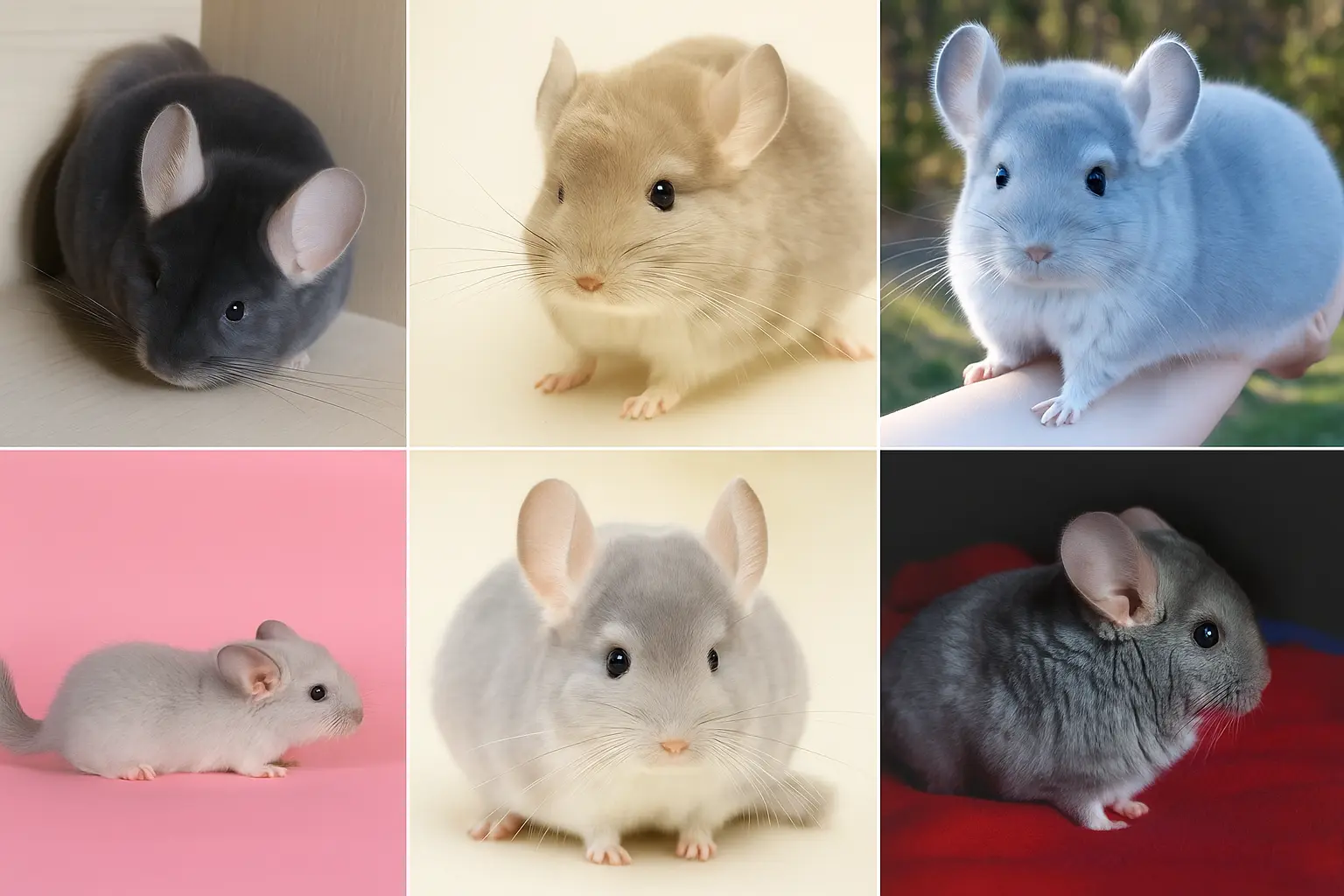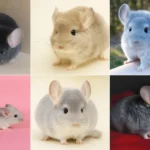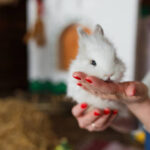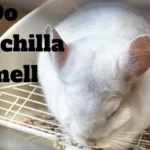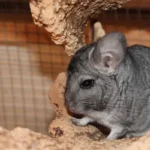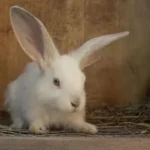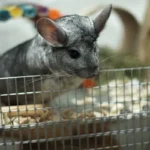A very common question every chinchilla lover wants to know is, How many chinchilla colors are there? I see this question on almost every platform: Facebook groups, forums, and pet blogs.
Many people and new chinchilla lovers confuse the colors because there are so many, and some even look almost the same. It can feel really hard to tell which colors are normal, rare, or just mixed.
In this article, you will learn about chinchilla colors in a very easy way. I’ll show you the names of the colors, what they look like, and which ones are rarer. After you read it, you’ll know how to pick the color you like the most.
Breaking Down the Different Chinchilla Colors
Chinchillas come in many different colors. Some are common, and some are rare. Many people don’t know the names or what each color looks like. That’s why we made this simple guide to help you learn about each one.
Let’s go over each color one by one.
1. Standard Gray
This is the most common chinchilla color. They have gray fur on top and a white belly. This color is natural and doesn’t require special breeding.
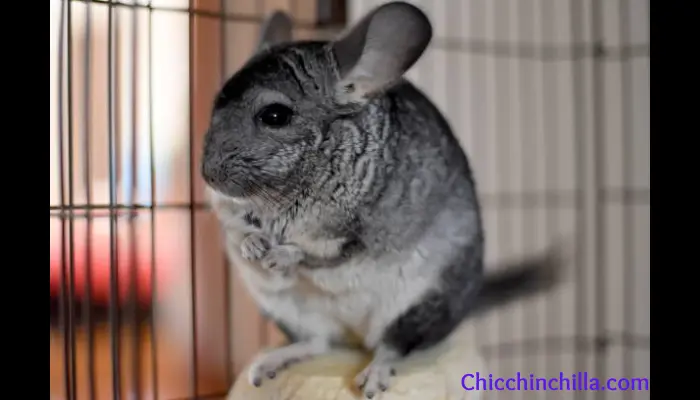
Credit: Gettyimages
2. Black Velvet
Black Velvet chinchillas have soft, black fur on their back and a white belly. They are bred by combining standard gray chinchillas with those carrying the “Touch of Velvet” gene.
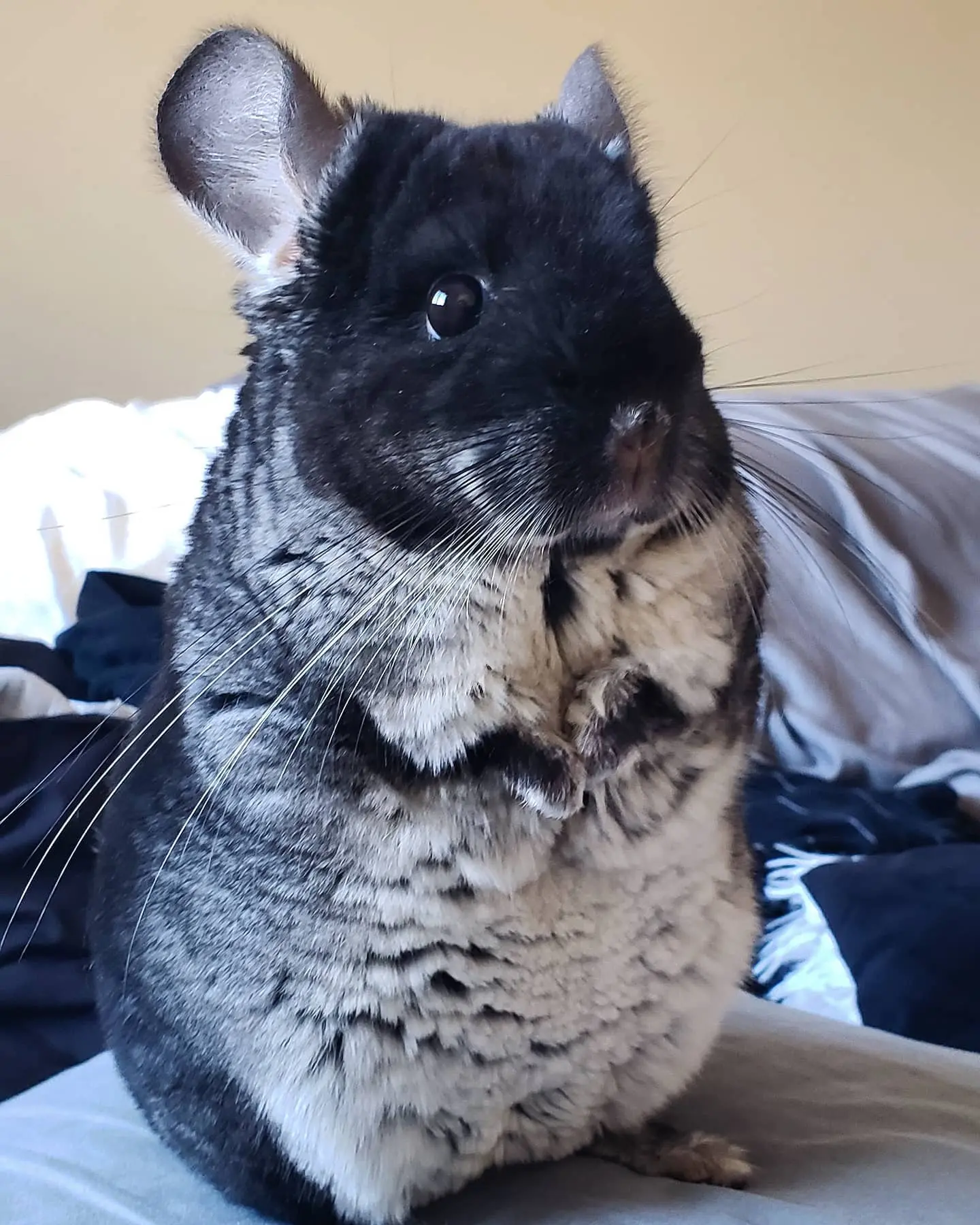
Credit: Gettyimages
3. Brown Velvet
These chinchillas have rich brown fur on their back and a white belly. They are created by breeding beige chinchillas with those carrying the “Touch of Velvet” gene.
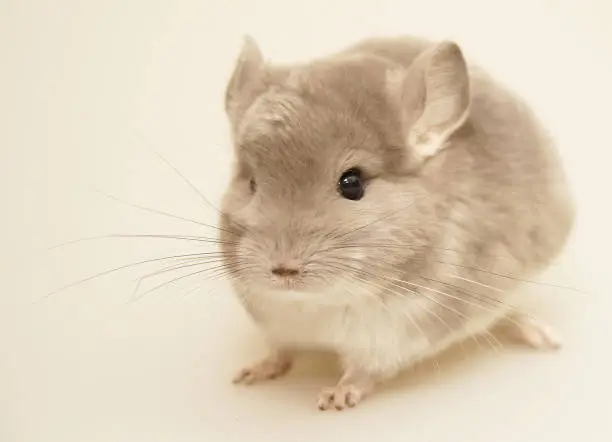
Credit: Gettyimages
4. Mosaic
Mosaic chinchillas have a mix of white and gray or black patches. Each one looks different. They are bred by combining white chinchillas with other colored ones.
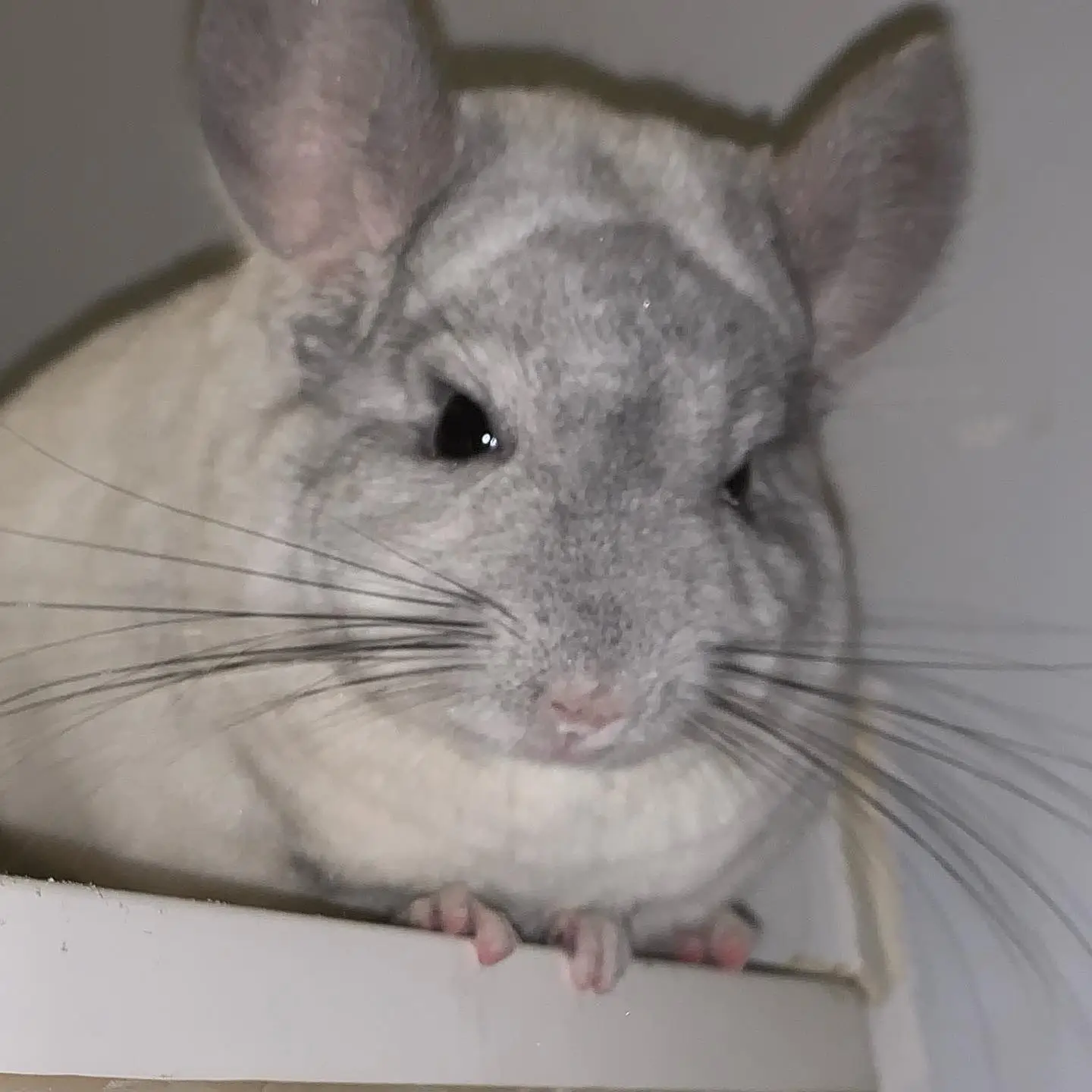
Credit: Gettyimages
5. Pink White
Pink White chinchillas are mostly white with a slight pink hue on their ears. They are made by breeding beige and white chinchillas.
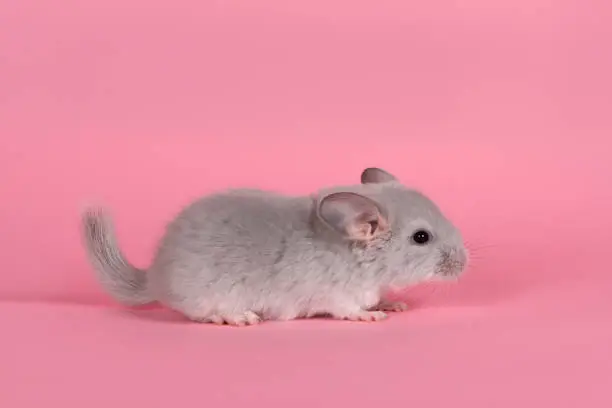
Credit: Gettyimages
6. Violet
Violet chinchillas have a soft, bluish-gray color. They are rare and are bred by combining two chinchillas that carry the violet gene.
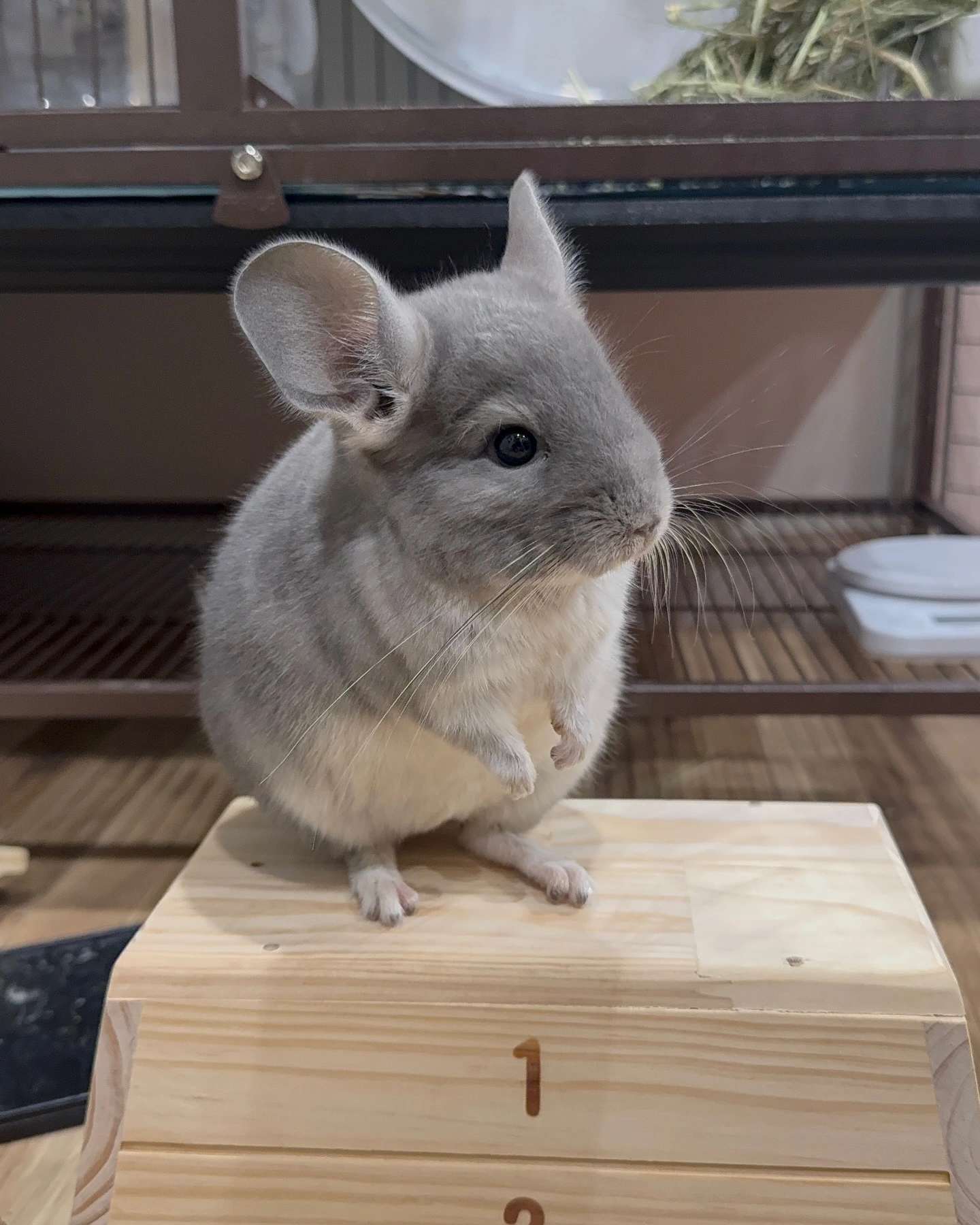
Credit: Gettyimages
7. Beige
Beige chinchillas have light brown or tan fur with a white belly. They are bred by combining standard gray chinchillas with beige ones.
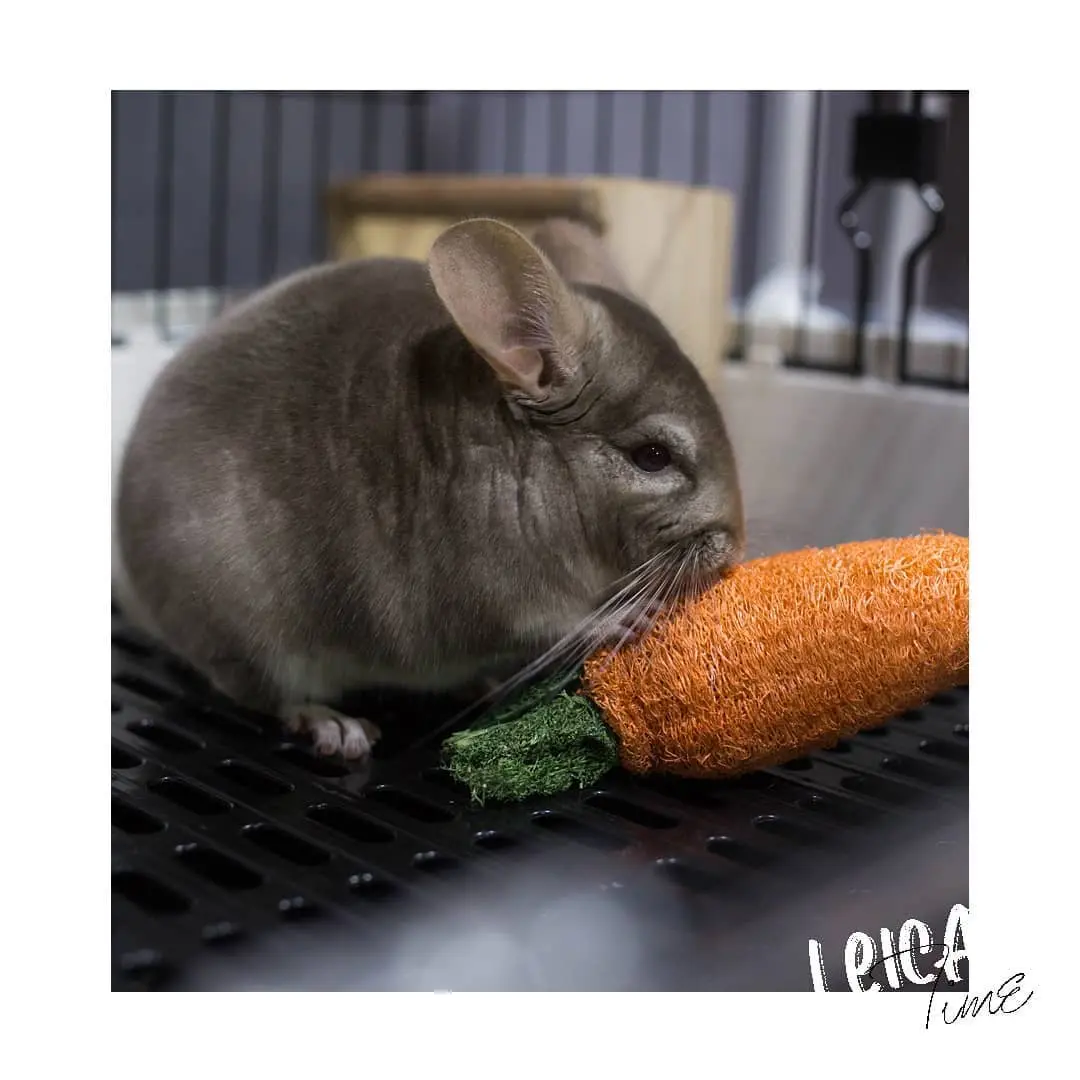
Credit: Gettyimages
8. Sapphire
Sapphire chinchillas have a light blue-gray color. They are rare and are bred by combining two chinchillas that carry the sapphire gene.
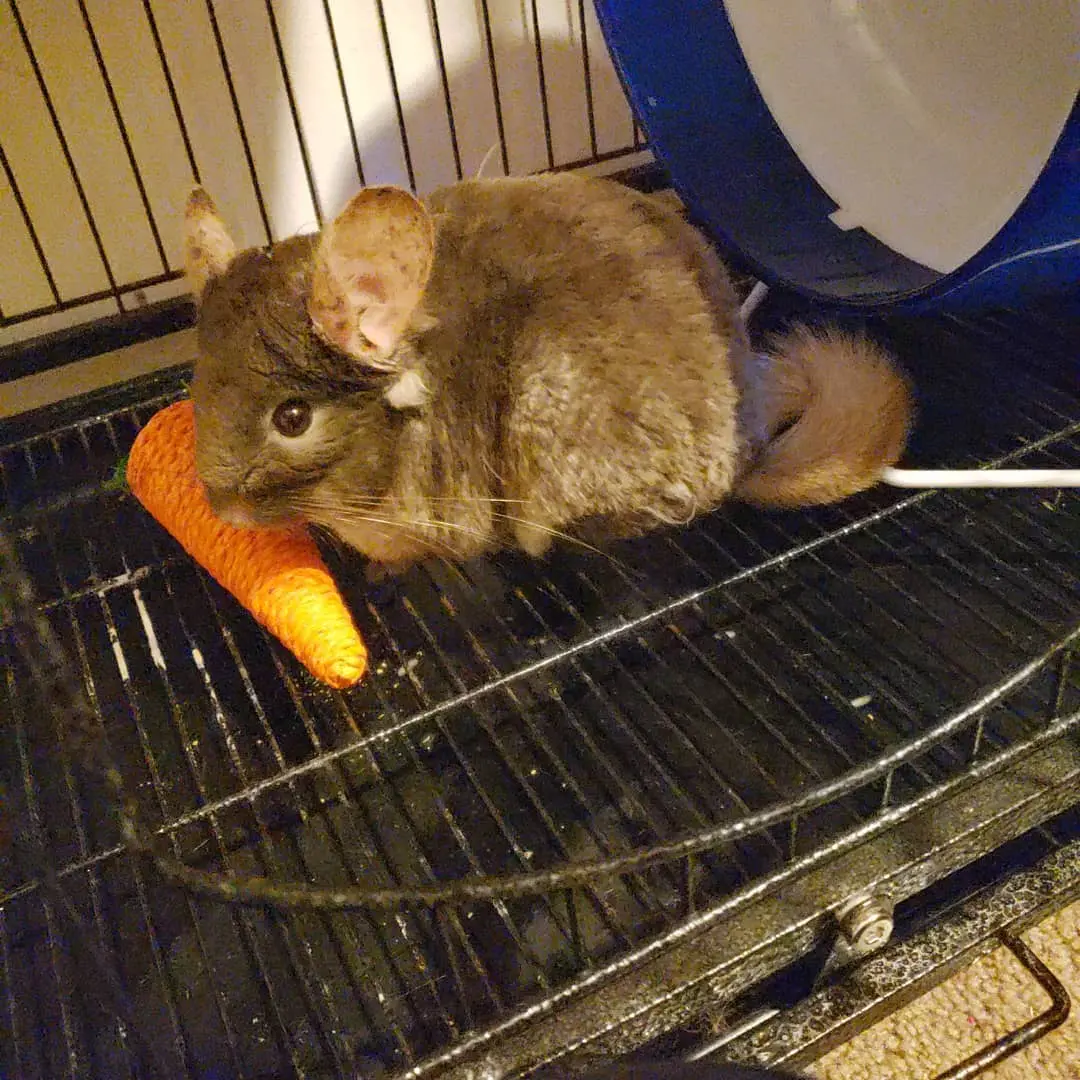
Credit: Gettyimages
9. White
White chinchillas have pure white fur. They are bred by combining white chinchillas with other white or light-colored ones.
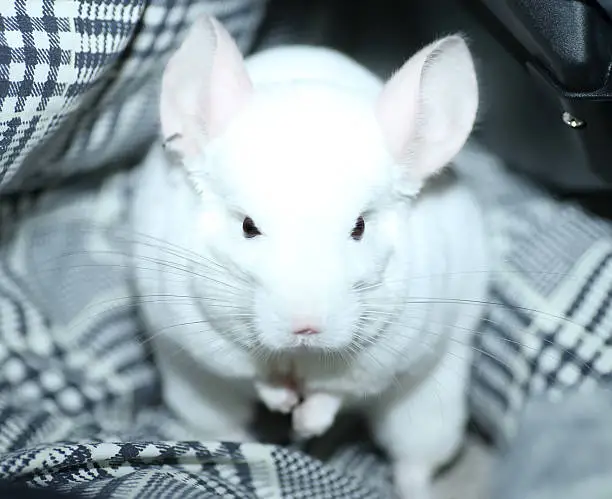
Credit: Gettyimages
10. Ebony
Ebony chinchillas have dark fur all over, including their belly. They are bred by combining two chinchillas that carry the ebony gene.
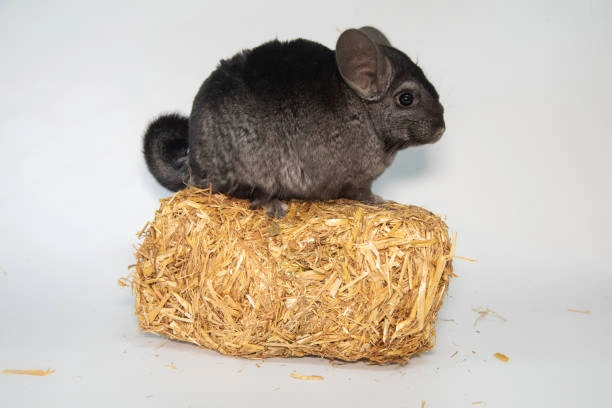
Credit: Gettyimages
11. Pastel
Pastel chinchillas have a soft, light brown color. They are created by breeding beige chinchillas with those carrying the ebony gene.
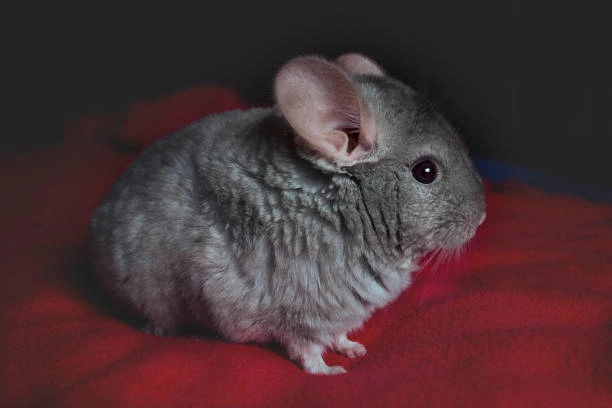
Credit: Gettyimages
12. Blue Diamond
Blue Diamond chinchillas have a shiny silver-blue coat. They are very rare and are bred by combining chinchillas that carry both the sapphire and violet genes.
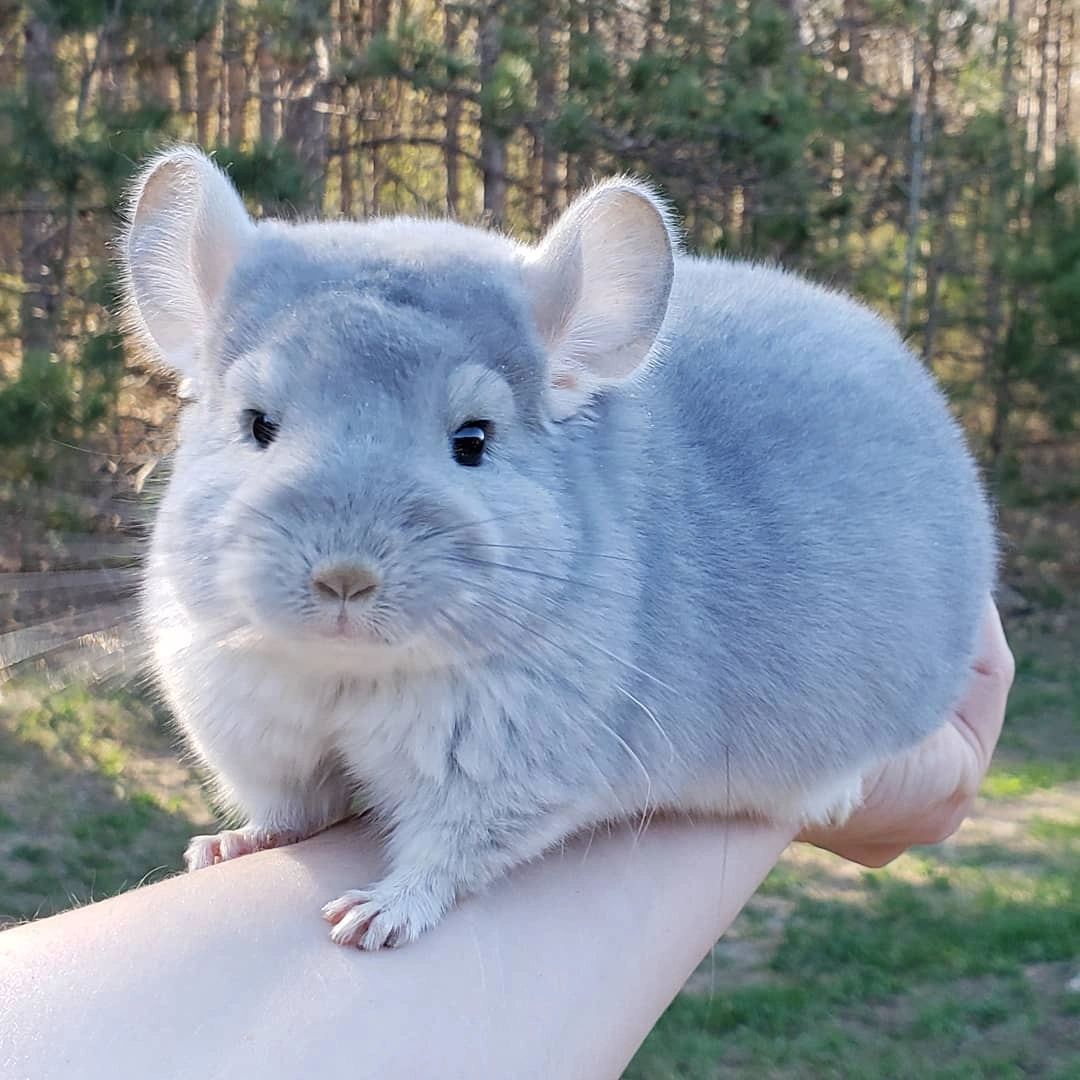
Credit: Gettyimages
13. Chocolate
Chocolate chinchillas have rich brown fur. They are bred by combining ebony and beige chinchillas over several generations.
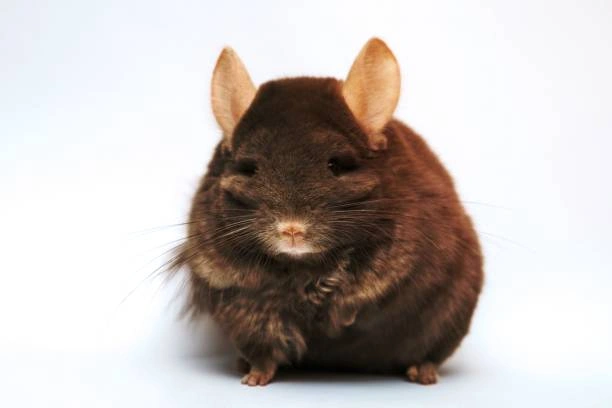
Credit: Gettyimages
14. Gray
Gray chinchillas are similar to Standard Gray but can be lighter or darker. They are common and don’t require special breeding.
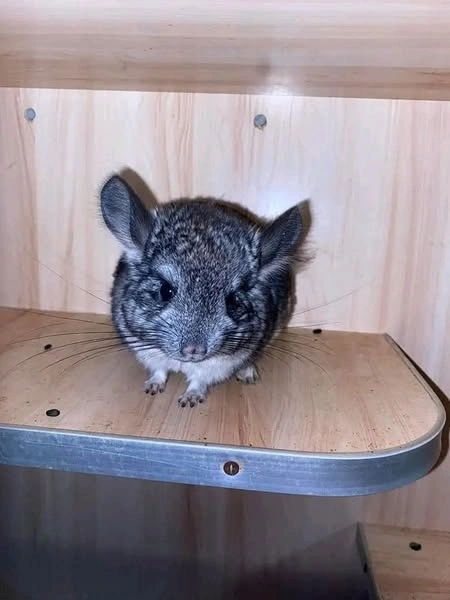
Credit: Gettyimages
15. Violet Wrap
Violet Wrap chinchillas have violet-colored fur all over, including their belly. They are bred by combining violet chinchillas with those carrying the ebony gene.
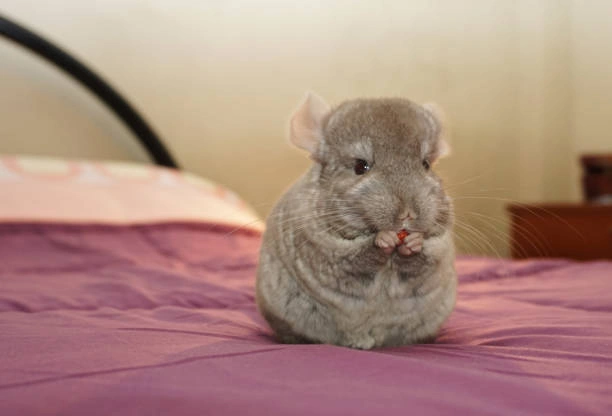
Credit: Gettyimages
16. TOV Homo Beige
These chinchillas have beige fur with darker shading on their head and back. They are bred by combining two beige chinchillas that carry the “Touch of Velvet” gene.
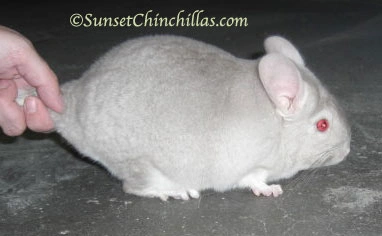
Credit: Gettyimages
17. Goldbar
Goldbar chinchillas have a golden or yellowish tint to their fur. They are very rare and are bred by combining chinchillas that carry the goldbar gene.
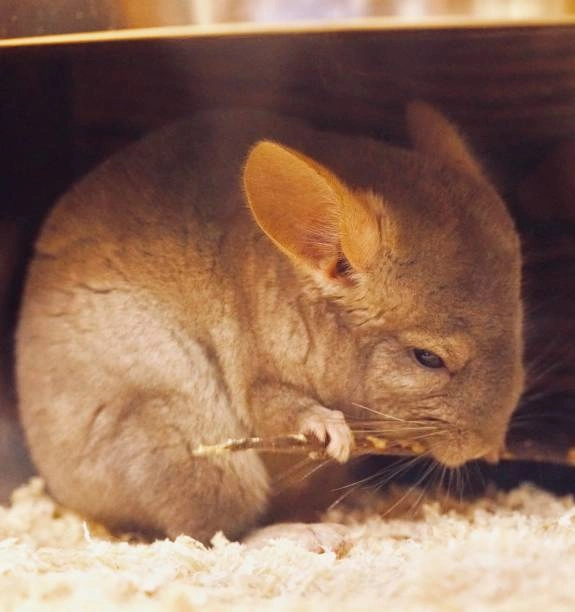
Credit: Gettyimages
18. Hetero Ebony
Hetero Ebony chinchillas have dark fur but with a lighter belly. They are bred by combining one ebony chinchilla with a non-ebony chinchilla.

Credit: Gettyimages
19. Hetero Beige
Hetero Beige chinchillas have light beige fur. They are bred by combining one beige chinchilla with a non-beige chinchilla.
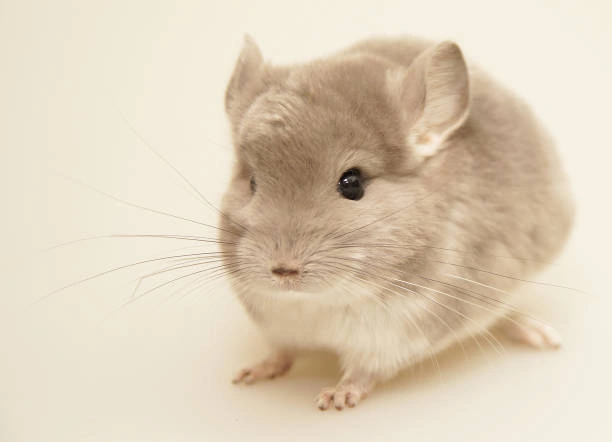
Credit: Gettyimages
20. Homo Beige
Homo Beige chinchillas have a stronger beige color. They are bred by combining two beige chinchillas.
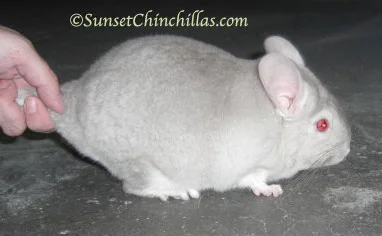
Credit: Sunsetchinchillas
21. White Mosaic
White Mosaic chinchillas have mostly white fur with patches of other colors. Breeders combine mosaic chinchillas with white ones to produce them.
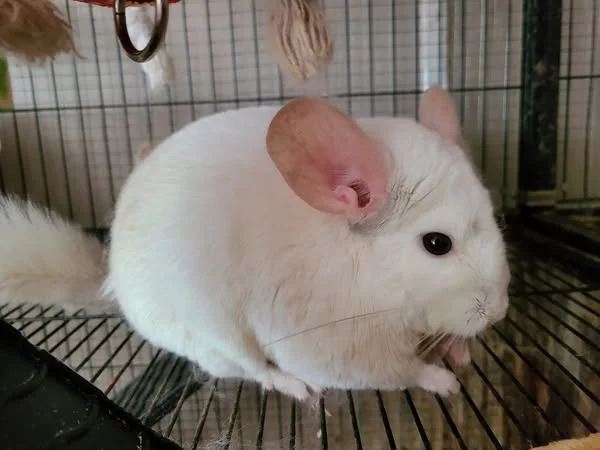
Credit: Gettyimages
22. Dark Tan
Dark Tan chinchillas have deep tan fur all over. Breeders combine ebony and beige chinchillas to produce them.
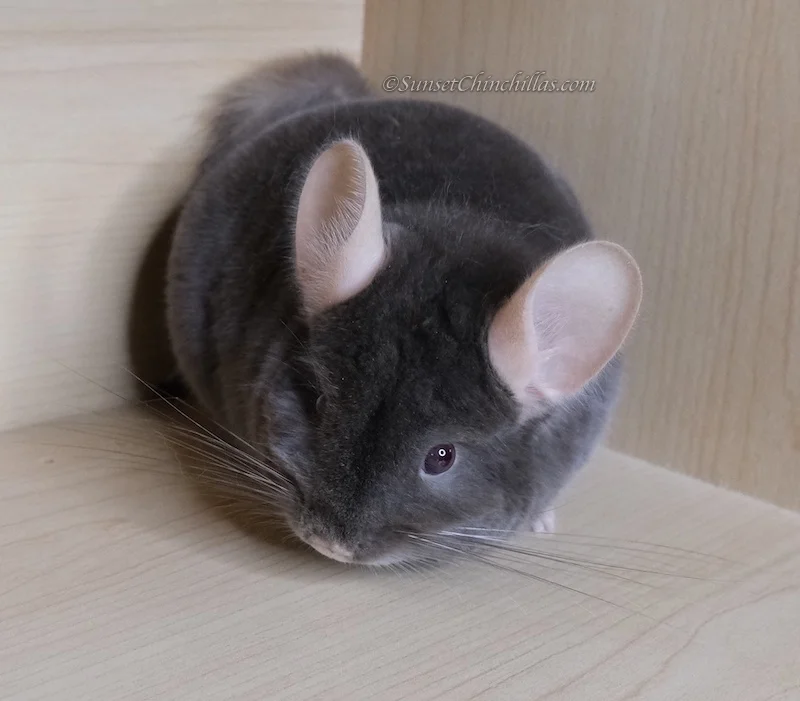
Credit: Sunsetchinchillas
23. Angora
Angora chinchillas have long, fluffy fur. Breeders produce them in many colors and select them for their soft, woolly coats.

Credit: Gettyimages
24. White Diamond
White Diamond chinchillas have shiny white fur that looks frosty. Breeders create them by combining chinchillas that carry the white diamond gene.
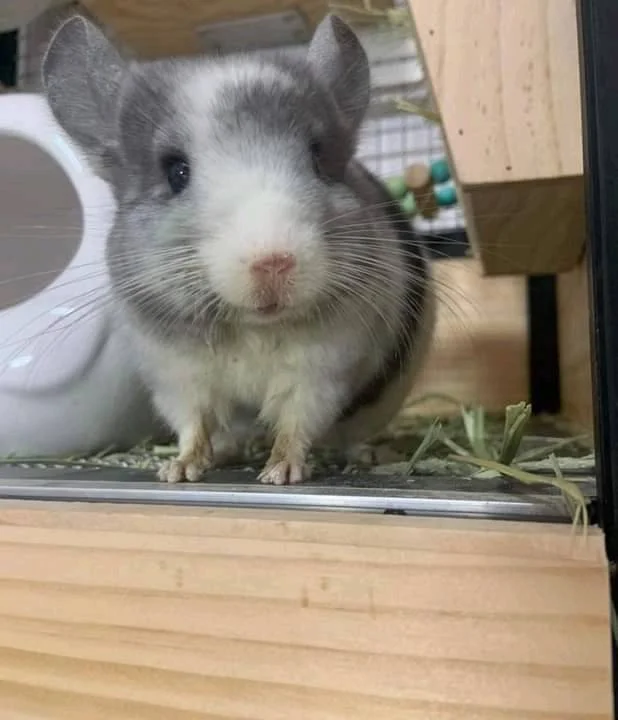
Credit: Gettyimages
Chinchilla Color Chart
The chinchilla colors chart helps you see all the different fur colors these amazing animals can have. From Standard Grey to fancy shades like Violet, Mosaic, or Black Velvet, each one is unique. The chart groups colors into standard, dominant, and recessive types.
Some colors are more common, while others are rare and prized by breeders. A good color chart teaches new owners how breeding passes down these shades. It’s fun to explore and helpful if you’re choosing your first chinchilla!
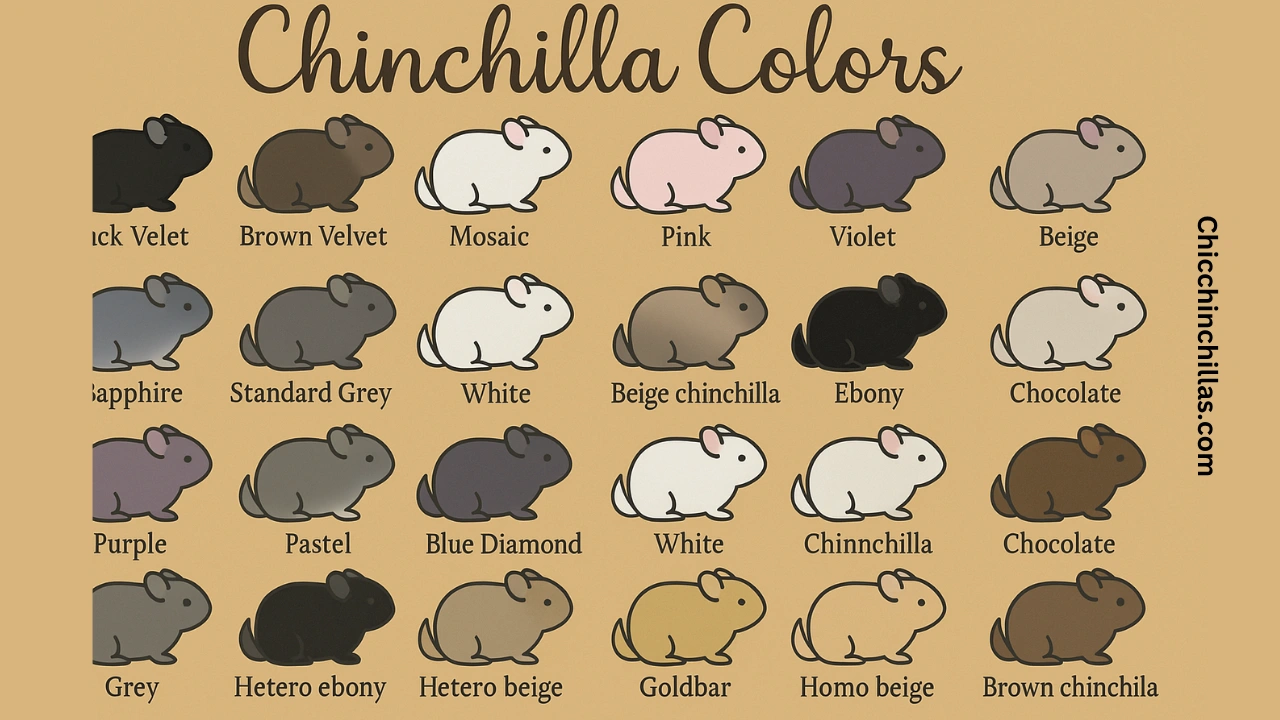
Taking Care of Every Different Chinchilla Color
Chinchillas come in so many pretty colors, black velvet, violet, mosaic, beige, and more. No matter what color their fur is, all chinchillas need the same kind of care. I’ve raised chinchillas for years, and my white chinchilla needs the same things as my grey one: good hay, clean water, a dust bath, and a safe place to play.
The color doesn’t change how you feed them or how much love they need. What matters most is their health and comfort. Every chinchilla, no matter the color, should have a cool room to live in (below 70°F or 21°C), wooden toys to chew on, and space to jump and explore. Their thick fur can trap heat, so they can get too warm fast. This is the same for all colors.
Their diet is also the same across all colors. Chinchillas thrive on high-fiber hay (like timothy hay), fresh water, and occasional safe treats. According to Oxbow Animal Health, hay is the number one food they need to stay healthy.
Dust baths are important, too. Every chinchilla, no matter the color, should get a dust bath 2 to 3 times a week to keep their fur clean and fluffy. I notice some lighter colors, like White or Pink White, might show dirt more easily, so I keep an extra eye on those areas.
Do Different Chinchilla Colors Need Special Care?
A lot of people ask me, “Do chinchillas with lighter colors need more cleaning?” The answer is sometimes, just a little. My white chinchilla shows dirt more than my dark one, especially on the feet and under the eyes. But it’s not a big problem. I just give them a fresh dust bath often and gently wipe their face if needed.
Some rare colors like Blue Diamond or Violet might have thicker or softer fur. These chinchillas sometimes need a little extra brushing to keep their coat smooth and free from tangles. I use a soft brush once a week, and they seem to enjoy it like a mini spa day!
But really, no color needs special care that’s harder or more work. All chinchillas love the same things dust baths, cool air, healthy snacks, and time to play. So don’t worry too much about color. Just make sure you treat your chinchilla like family, and they’ll be happy no matter what shade they are.
Final Thoughts
Chinchilla colors are beautiful, but they don’t change what truly matters, how we care for them. From Standard Grey to rare colors like Violet or Blue Diamond, each chinchilla still needs the same daily things: fresh hay, cool temperatures, dust baths, and gentle handling. Color is just a part of their charm, not a reason to treat them differently.
If you’re choosing a chinchilla, go for the one you connect with, not just the color. Every chinchilla has a personality of its own, and with the right care, they’ll thrive in your home, whether they’re beige, black, or something in between.
FAQ’s About Chinchilla Colors
What are the rare chinchilla colors?
One of the rare chinchilla colors is Blue Diamond. It’s hard to find because it needs two special genes, sapphire and violet. Other rare ones include Goldbar and White Diamond, which are also not easy to breed.
Can chinchillas naturally be purple?
No, chinchillas are not purple in real life. Some colors, like Violet or Violet Wrap, may appear slightly purplish or bluish in certain lighting conditions, but chinchillas are not truly purple. It’s just the way their soft fur reflects light.
What colors can chinchillas see?
Chinchillas don’t see as many colors as humans. They mostly see shades of gray and some colors, such as blue and green. Their eyesight is better in the dark, which helps them stay safe at night.
